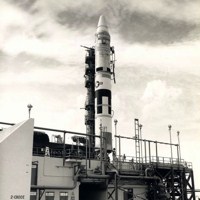In addition to imposing more Western sanctions on Russia and rotating more U.S. troops into Europe, the U.S. and its NATO allies are considering increasing U.S. ballistic missile defenses (BMD) based in NATO’s European member states as part of their response to Russian actions in Ukraine. Moscow clearly hates these U.S. systems, and placing them near Russia is sure to capture Moscow’s attention. A few weeks ago, a pair of Russian warplanes “buzzed” a U.S. missile defense ship that was on patrol in the Black Sea. That said, the U.S. missile defense response needs to be nuanced to yield net benefits to Western security.
In particular, it would be a mistake to resurrect the plan of the George W. Bush administration to base 10 ground-based interceptors in Poland and a powerful X-Band radar in the Czech Republic. The Obama administration canceled these plans in 2009 and instead rolled out a European Phased Adaptive Approach (EPAA) that sought to respond more directly to Iran’s progress in developing shorter-range missile systems. In March 2013, the Obama administration canceled on technical and cost grounds the fourth and final phase of the EPAA, under which the United States would have designed new Standard Missile (SM) SM-3 Block IIB long-range interceptors and placed them in eastern Europe with the mission of intercepting Iranian intercontinental ballistic missiles (ICBMs) launched toward the United States.
Each of these decisions made some sense in isolation, but their combined effect was to deepen partner anxieties about the steadfastness of U.S. policy and the worth of U.S. security guarantees. At this point, announcing further restrictions of the East European-based component will likely cause only additional exasperation in the region, especially in Poland, which has already decided to pursue its own national missile defense in addition to the proffered NATO one. Meanwhile, the Czech president has stressed that his country absolutely does not want the radar, which was unwelcome to many Czechs even in the mid-2000s. Finally, the two variants of the “kill vehicles” on the ground-based interceptors, which are essentially rushed prototypes deployed during the past decade to meet an urgent threat, do not work well, having failed in many tests. It will take the Pentagon at least five years to design and deploy a next-generation kill vehicle. In addition, the alternative SM-3 Block IIB was technologically flawed, and Congress had balked at funding such a questionable system.

